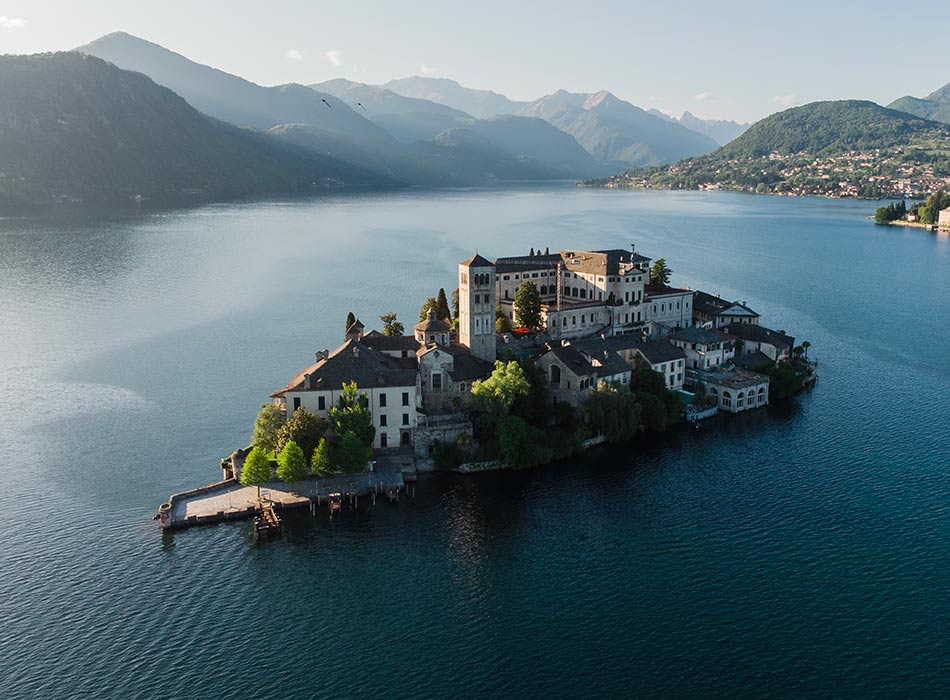
EVENT PROGRAMME
4 June
Sarah Coles
Rose Symbolism through the Ages
Kottakki Suruchi Patnaik
A Sacred and Curious Symbolism of Roses in Western Art
Visit Villa Adua
5 June
Mairi MacKenzie
The Scent of Roses: The Inward Fragrance of each other’s Heart
Viru and Girija Viraraghavan
Roses in India in history, art, cultural and social life
Visit Villa Motta/San Giulio Island
6 June
Martin Stott
Culture and Cultivation: How Rose Shows Changed the Shape of Rose History
Peter Kukielski
A Poet Visits the Museum of Fine Arts
Thilo Westermann
The Most Beautiful Rose in France
Amy de la Haye
Wild & Cultivated: Fashioning the Rose
7 June
Elisa Bailey
The Politics of Roses: Resistance, Resilience, Ruse
Shane Connolly
Roses in Art; Roses as Art
Visit Sacro Monte and Palazzo Gemelli

Villa Adua
Villa Adua overlooks Lake Orta and its beautiful Island of San Giulio. It was designed by arch. Gino Bozzetti in the 1960s and built with granite from the Madonna del Sasso quarries.
Villa Adua’s garden, which covers an area of more than 30,000 square metres, contains a great variety of botanical species, and thanks to the influence of the favourable microclimate of the lake, it also accommodates plants and shrubs that are rarely found in the area. You will find over 3000 roses in a great range of different varieties. Many of them are David Austin’s English Roses but they also include climbers, ramblers, shrub, hybrid teas and species. Starting with pure white they pass through all shades of pink, yellows, orange, apricot and red.
Part of the rose garden at Villa Adua was designed by Michael Marriott, one of the world’s leading rose garden designers.
Beautiful specimens of beech trees, majestic chamaecyparis, firs and maritime pines blend perfectly into the landscape surrounding the villa. The care and preservation of these plants has always been, and still is, a prerogative in the management of the park.
Centuries-old olive trees, Magnolia Grandiflora, Taxus and many other varieties complete the scenery of Villa Adua’s garden.
Villa Motta
The villa is on the tip of the Orta peninsula, directly overlooking the lake.
Built in the second half of the 19th century. The garden, started in 1880 and continuously enlarged and enriched until today, stretches out on the slopes of the hill surrounding the villa. Unlike many traditional parks, the garden is laid out with groves of fine plants (camellias, osmanthus and rhododendrons) and hedges (azaleas and roses), while conifers (including the rare and magnificent Caucasian firs) act as a backdrop. The garden is therefore very bright, and its avenues offer many views of the lake and the island of San Giulio. Blooming is all year round, alternating roses (May-October), osmanthus (September-October), winter camellias (sasanqua), spring camellias (japonica, reticulata, cuspidata, williamsii hybrids and others), rhododendrons and azaleas.


Island of San Giulio
The small island of San Giulio, which can be reached by boat or motorboat, is dominated by the Romanesque basilica, the bishop’s palace and the Benedictine abbey.
The island is no more than 400 metres from the shore of Orta.
Tourists are welcomed to the island by a short flight of steps leading up to the impressive Romanesque basilica, the main attraction of the place. The visit continues through a narrow street that runs the length of the island; this is the ‘path of silence and meditation’, a suggestive combination of spirituality and architecture. Walking through the alleys of San Giulio, we reach the 19th-century Palazzo dei Vescovi and the Mater Ecclesiae Benedictine Abbey: in this fascinating cloistered convent for women, the nuns, who reside permanently on the island, spend their days devoting themselves to prayer, study, the restoration of ancient and precious sacred vestments, the making of hosts and the preparation of the famous ‘pane di San Giulio’ (St Julius’ bread). The other buildings on the island, now private residences, were once the homes of the canons. One of the oldest is Villa Tallone, where prestigious classical music concerts are held every year.
Sacro Monte
Sacro Monte is located in an extraordinary landscape setting, on a wooded promontory jutting out into Lake Orta. A devotional itinerary of Twenty chapels immersed in nature illustrate episodes from the life of St Francis with sculptures and paintings, distributed along a path that winds along the summit of the mountain, opening up spectacular views of the lake and the island of San Giulio.
Construction work on the religious complex began in 1590 and continued for more than a century.
The statues and paintings on Sacro Monte compose scenes of great realism, where the intimate and natural atmospheres typical of early 17th century Lombard art are combined with the lively Baroque theatricality of the late 17th century.
In addition to the artists, the contribution of skilled local artisans who have left numerous testimonies of their industrious art by creating beautifully crafted wooden and wrought iron doors, grilles and gratings is also appreciable.
The territory of the Reserve is 13 hectares divided into two distinct areas: the slopes of the hill where broadleaf forests prevail and the monumental area where the vegetation has always been cared for as a historical garden.
Already the author of the Sacro Monte project studied not only the path between the chapels but also the environment and the vegetation. This created that unique relationship between nature, the spectacle of the lake, the greenery and the chapels that still characterises Sacro Monte today. The vegetation then changed over time, in relation to taste and also to the type of use of the complex, favouring more ornamental essences: beeches, lindens, oaks and Scots pines are now of considerable size.
Next to these, among the shrubs, mainly used as hedges along the paths and as joyful patches of colour within the vegetation, are boxwood, laurel and numerous holly trees.

Would you like to participate
in the symposium?
Are you interested in the event?
Take a look at the packages we have designed for you to attend the symposium.



